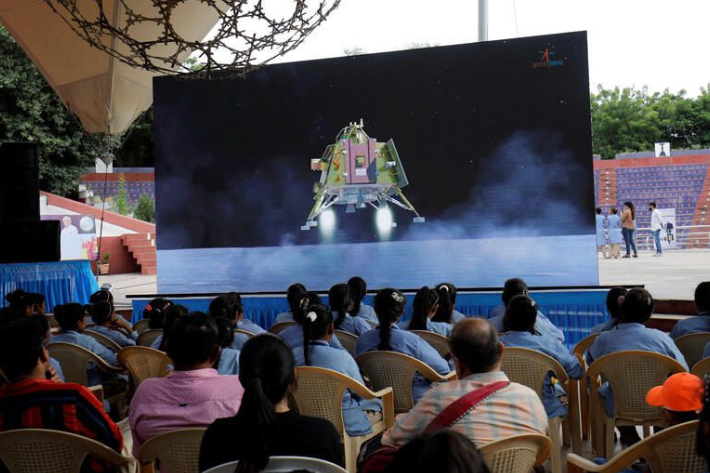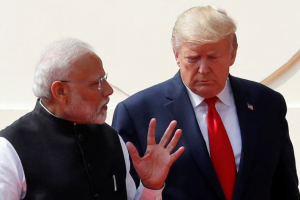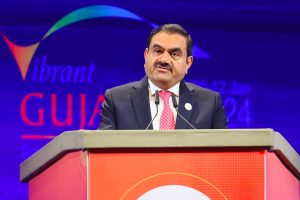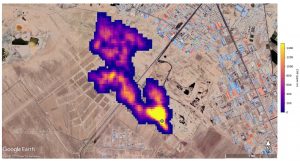Celebration and excitement consumed India as the country’s Chandrayaan-3 spacecraft successfully made a soft landing on the lunar South Pole.
“India is on the moon,” said S Somanath, chief of the Indian Space Research Organisation (ISRO) as Chandrayaan-3 landed on the lunar south pole around about 6:04 pm local time (1234 GMT) on Wednesday.
Scientists and officials at ISRO clapped, cheered and hugged each other as the lander touched the lunar surface, following which Indian Prime Minister Narendra Modi addressed viewers of the live telecast.
Also on AF: Russian Spacecraft Luna-25 Crashes on The Moon
“This is a victory cry of a new India,” Modi said after watching the landing from South Africa, where he is attending the BRICS summit.
The mission was crucial to lunar exploration and India’s standing as a space power. All eyes were on the spacecraft whose landing attempt came just days after a similar Russian lander, Luna-25, crashed.
People across the country were glued to television screens and said prayers as the spacecraft approached the surface.
Historic moment
Chandrayaan means “moon vehicle” in Hindi and Sanskrit. The vehicle will likely remain functional for two weeks and run a series of experiments, including a spectrometer analysis of the mineral composition of the lunar surface.
For India, a successful moon landing marks its emergence as a space power as the Modi government looks to spur investment in private space launches and related satellite-based businesses.
Chandrayaan-3 Mission:
‘India🇮🇳,
I reached my destination
and you too!’
: Chandrayaan-3Chandrayaan-3 has successfully
soft-landed on the moon 🌖!.Congratulations, India🇮🇳!#Chandrayaan_3#Ch3
— ISRO (@isro) August 23, 2023
The mission was India’s second attempt to land on the lunar south pole. In 2019, ISRO’s Chandrayaan-2 mission successfully deployed an orbiter but its lander crashed.
“Landing on the south pole (of the moon) would actually allow India to explore if there is water ice on the moon. And this is very important for cumulative data and science on the geology of the moon,” Carla Filotico, a partner and managing director at consultancy SpaceTec Partners, said.
Rough terrain makes a south pole landing difficult, and a first landing is historic. The region’s water ice could supply fuel, oxygen and drinking water for future missions.
Prayers and patriotism
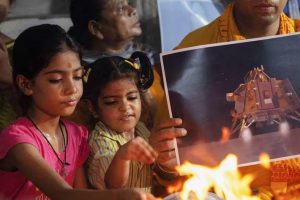
In the hours leading up to the scheduled landing, the mood was upbeat at the spacecraft command centre on the outskirts of Bengaluru, as ISRO officials and scientists hunched over big massive screens monitoring the lander.
Prayers were held at places of worship across all religions in the country, and schoolchildren waved the Indian tricolour in the hours before the landing.
Anticipation and excitement for the landing was feverish, with banner headlines across newspapers and news channels running countdown timers to the landing.
Children gathered on the banks of the Ganga river, considered holy by Hindus, to pray for a safe landing, and mosques in several places offered special prayers. At a Sikh temple, known as a gurduwara, in the capital New Delhi, Petroleum Minister Hardeep Singh Puri offered prayers for Chandrayaan.
“Not just economic, but India is achieving scientific and technological progress as well,” Puri told reporters.
- Reuters, with additional editing by Vishakha Saxena
This report was updated with information about the spacecraft successfully landing on the lunar surface.
Also read:
India’s Chandrayaan-3 Moon Mission Shares Historic Photos – BBC
China to Begin Building Moon Base With Lunar Soil by 2028
China Looking to 3D Print Lunar Buildings Using Moon Soil
Japan Plans to Beam Solar Power From Space by 2025 – engadget
China Moon Rover Explores ‘Different’ Far Side – New Scientist




